My grandfather, Pieter Schoonheim, gave me the plate 50 years ago. It commemorated his company, "ROTTERDAMSCHE KOLENCENTRAL" which he established in 1931. I believe he had plates made to give to his family although I don't know of anyone else who has one.
Vraag
Hoping to get more history on the plate which I have no doubt is real Delft pottery. It's traveled with me all these years and hung in a place of honor in all my homes.
Afmetingen
30 centimeters diameter
Collectie
publiekscollectie
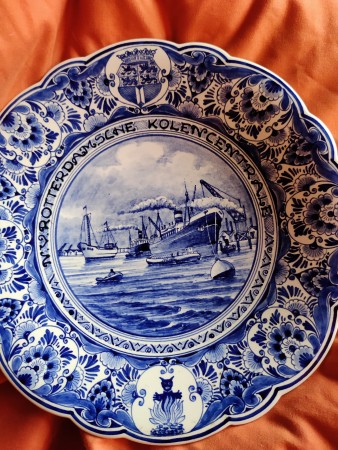
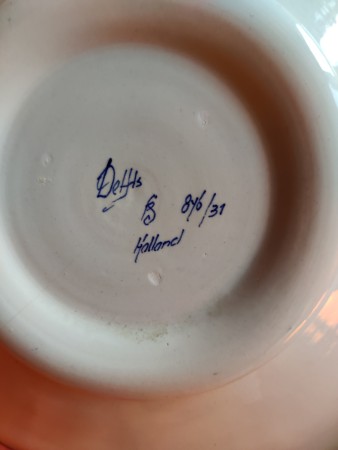
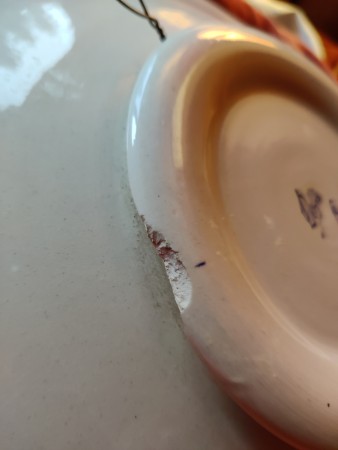
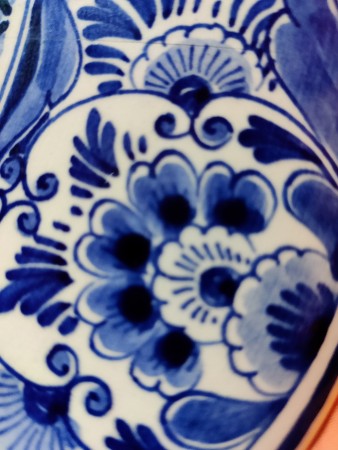
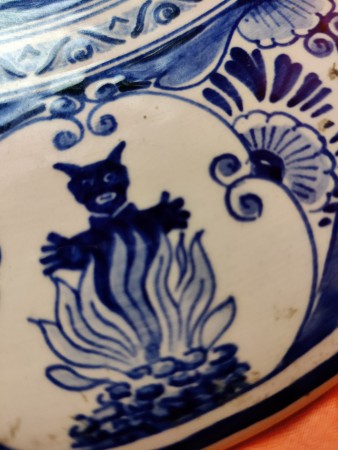
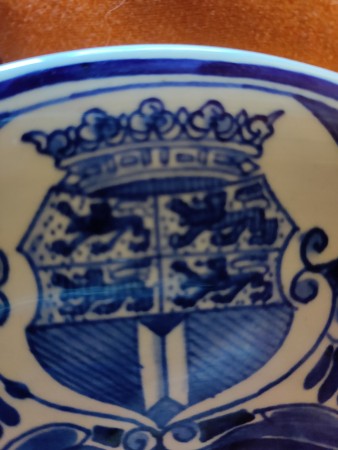








Reacties 3
Is geen echt Delfts aardewerk, delfts aardewerk werd gemaakt in de periode van omstreeks 1650-1850. Deze schotel is nieuw, volledig handgeschilderd, onderglazuurschildering, de zogenaamde nieuwe techniek, plateelschilder(es) onbekend, gemaakt bij Plateelbakkerij ’Schoonhoven’ te Schoonhoven, na 1945, in de stijl van delfts blauw. Op achterzijde: 876/31 betekent modelnummer 876 met een diameter van 31 cm, deze methode van nummering zou rond 1980 zijn ingevoerd, zie de uitgave ’Plateelbakkerij Schoonhoven’ door Leendert de Jonge, bladzijde 62, ISBN 90-400-8826-8, dit komt niet overeen met uw gegeven dat de schotel vijftig jaar in uw bezit is, Leendert de Jonge heeft onder andere gegevens verzameld via interviews met oud-werknemers, er kan iets verkeerd zijn overgekomen, de herinnering onzeker. Hierbij een krantenbericht uit het dagblad Trouw van 14 december 1955. Het betreft Rijk Pieter Schoonheim en Lambertus Rijk Pieter (Bill) Schoonheim. Groet jvdh.
Is not real Delft pottery, delft pottery was made in the period from around 1650-1850. This dish is new, completely hand-painted, underglaze painting, the so-called new technique, pottery painter(s) unknown, made at Plateelbakkerij 'Schoonhoven' in Schoonhoven, after 1945, in the Delft blue style. On the back: 876/31 means model number 876 with a diameter of 31 cm, this method of numbering would have been introduced around 1980, see the edition 'Plateelbakkerij Schoonhoven' by Leendert de Jonge, page 62, ISBN 90-400-8826-8, this does not correspond to your fact that the dish has been in your possession for fifty years. Leendert de Jonge has collected data through interviews with former employees, among other things, something may have happened wrong, the memory is uncertain. Hereby a newspaper report from the daily newspaper Trouw of December 14, 1955. It concerns Rijk Pieter Schoonheim and Lambertus Rijk Pieter (Bill) Schoonheim. Greetings jvdh.
Dear Dylan, thank you for sharing your family treasure with us.
The inspiration for the blue and white pattern and the lobed rim is taken from antique 17th century Delft. This plate is 20th century as you already know from Jan's reply. At that time there was a renewed popularity for blue and white ceramics. Various factories were active throughout the Netherlands, eg. Gouda and Schoonhoven, who produced both colorful wares and the classical blue and white wares. It was a custom to give these commemorative dishes to employees at their retirement, or for company jubiliees to order them as presents for clients or staff. And as your family story illustrates to other relatives as well.
The Schoonhoven factory started with a Delftware product assortment after 1945/46. Could there be a relevant jubilee date after this? Do you know untill when the factory existed (or exists)? Would the 50 year jubilee 1981 be an option? this would match the above information of Jan and then it would be in your ownership for about 40 years?
I hope you treasure it for the next generation in your family to enjoy the Dutch history of your grandfather.
Verdict:
Analysis:
Add new comment
Only logged in users can post comments
Log in or register to post comments